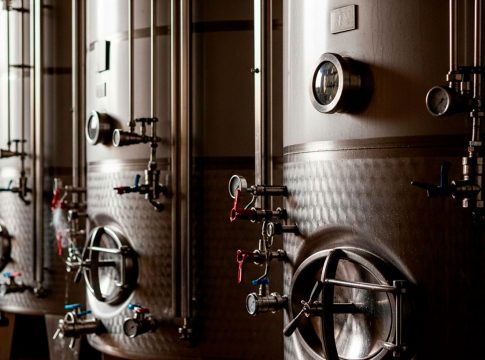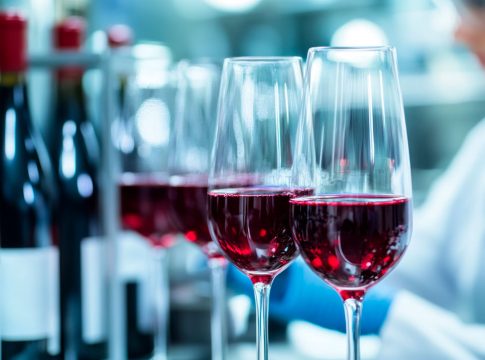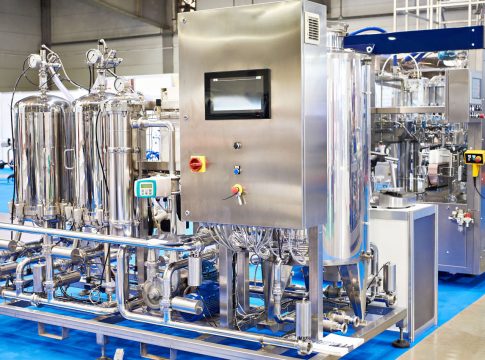
Quali sono gli strumenti a disposizione dei produttori per contenere l'accumulo di zuccheri in vigneto e ridurre la presenza di alcol in cantina, invertendo la tendenza che negli anni passati ha portato all'affermazione di vini sempre più alcolici e andando invece incontro ad una crescente richiesta di vini più equilibrati e con gradazioni più contenute o addirittura di bevande a bassa o bassissima gradazione alcolica? Naturalmente nella scelta degli strumenti...
L'ARTICOLO COMPLETO A FIRMA DI ALESSANDRA BIONDI BARTOLINI E' PUBBLICATO A PAGINA 11 DEL FASCICOLO 4/2015 DI VQ. PER LEGGERE LA RIVISTA ONLINE E' NECESSARIO ESSERE ABBONATI.
VAI ALLA PAGINA DEGLI ABBONAMENTI
PER APPROFONDIRE (Approfondimenti a cura dell'Autore)
Bibliografia
Bely M., Renault P., Da Silva T., Masneuf-Pomarèd I., Albertin W., Moine V., Coulon J., Sicard D., De Vienne D., Marullo P., Non-conventional yeasts and alcohol levels reduction in Alchol Level Reduction in Wine. 1st International Symposium – Oenoviti International Network, Bordeaux 6 settembre 2013, pp33-37. Ehsani M, Fernández MR, Biosca JA, Julien A, Dequin S., Engineering of 2,3-butanediol dehydrogenase to reduce acetoin formation by glycerol-overproducing, low-alcohol Saccharomyces cerevisiae. Appl Environ Microbiol. 2009 May;75(10):3196-205. doi: 10.1128/AEM.02157-08. Epub 2009 Mar 27. Fedrizzi B., Nicolis E., Camin F., Bocca E., Carbognin C., Scholz M., Barbieri P., Finato F., Ferrarini R., Stable Isotope Ratios and Aroma Profile Changes Induced Due to Innovative Wine Dealcoholisation Approaches, Food and Bioprocess Technology January 2014, Volume 7, Issue 1, pp 62-70 Ferrarini R., Ciman G.M., Cugini L, Gostoli C., Simoni M., Camin F., Membrane contractor process to reduce ethanol in wine. Volatile compounds and stable isotope ratios changes in in Alchol Level Reduction in Wine. 1st International Symposium – Oenoviti International Network, Bordeaux 6 settembre 2013. 53- 63 FILIPPETTI I., ALLEGRO G., MOVAHED N., PASTORE C., VALENTINI G., INTRIERI C., Effects of late-season source limitation induced by trimming and antitranspirants canopy sprays on grape composition during ripening in Vitis vinifera cv. Sangiovese., in: 17th International Symposium of the Group of International Experts of Vitivinicultural System for Cooperation (GiESCO), MONTPELLIER, Le Progrés Agricole et Viticole, «LE PROGRÈS AGRICOLE ET VITICOLE», 2011, pp. 259 - 262 Frost R., Quiñones I., Veldhuizen M., Alava J., Small D., Carreiras M., What Can the Brain Teach Us about Winemaking? An fMRI Study of Alcohol Level Preferences, PLOS ONE DOI:10.1371/journal.pone.0119220 March 18, 2015 Kliewer W.M., Dokoozlian N.K., 2005. Leaf area/crop weight ratios of grapevines: influence on fruit composition and wine quality. Am. J. Enol. Vitic., 56, 170-181. KONTOUDAKIS N., ESTERUELA M.S, FORT F., CANALS J:M:, ZAMORA F. Use of unripe grapes harvested during cluster thinning as a method for reducing alcohol content and pH of wine , Australian Journal of Grape and Wine Research 05/2011; 17(2):230 - 238. DOI:10.1111/j.1755-0238.2011.00142. Lisanti M.T., Gambuti A., Genovese A., Piombino P., Pessina R., Moio L., 2011. Dealcolizzazione del vino e identità sensoriale. Supplemento a L'Informatore Agrario 13/2011, 39-42. Martinez De Toda F., Sancha J.C., Zheng W., Balda P, 2014 Leaf area reduction by trimming, a growing technique to restore the anthocyanins : sugars ratio decoupled by the warming climate. Vitis 53 (4), 189–192 (2014) Martinez De Toda F., Zheng W., Del Galdo V., Garcia J., Balda P., Sancha J.C., La poda minima del vinedo como herramienta de adaptacion al cambio climatico. 2015. Agricultura Febrero 2015, 2-5. Novello V., De Palma L., Viticultural strategy to reduce alcohol levels in wine, in: Alchol Level Reduction in Wine. 1st International Symposium – Oenoviti International Network, Bordeaux 6 settembre 2013 - pp 3-8. Palliotti A., Poni S., Berrios J. G., Bernizzoni F., 2010. Vine performance and grape composition as affected by early-season source limitation induced with antitranspirants in two red Vitis Vinifera L. cultivars. Austr. J. Grape Wine Res., 16, 426-433. Palliotti A., Silvestroni O., Leoni F., Poni S., 2012. Maturazione dell’uva e gestione della chioma in Vitis vinifera: processi e tecniche da riconsiderare in funzione del cambiamento del clima e delle nuove esigenze di mercato. Italus Hortus, 19 (2), 1-15. Quirós M, Rojas V, Gonzalez R, Morales P. Selection of non-Saccharomyces yeast strains for reducing alcohol levels in wine by sugar respiration. Int J Food Microbiol. 2014 Jul 2;181:85-91. doi: 10.1016/j.ijfoodmicro.2014.04.024. Epub 2014 Apr 29. Schmidtke, L. M., Blackman, J. W. and Agboola, S. O. (2012), Production Technologies for Reduced Alcoholic Wines. Journal of Food Science, 77: R25–R41. doi: 10.1111/j.1750-3841.2011.02448. Stéphanie Heux, Jean-Marie Sablayrolles, Rémy Cachon, Sylvie Dequin, Engineering a Saccharomyces cerevisiae Wine Yeast That Exhibits Reduced Ethanol Production during Fermentation under Controlled Microoxygenation Conditions, Appl. Environ. Microbiol. September 2006 vol. 72 no. 9 5822-5828 Stoll M., Lafontaine M., Schultz H.R., 2010. Possibilities to reduce the velocity of berry maturation through various leaf area to fruit ratio modifications in Vitis vinifera L. Riesling. Progrès Agricole et Viticole, 127(3), 68-71. Stoll M., Stoeber V., Tittmann S., Viticultural practices to match future challenges in Alchol Level Reduction in Wine. 1st International Symposium – Oenoviti International Network, Bordeaux 6 settembre 2013 pp 21-22 Tilloy V., Cadière A., Ehsani M. and Dequin S., Microbiological strategies to reduce alcohol levels in wines, in Alchol Level Reduction in Wine. 1st International Symposium – Oenoviti International Network, Bordeaux 6 settembre 2013, p. 29 – 32 Varela C, Kutyna DR, Solomon MR, Black CA, Borneman A, Henschke PA, Pretorius IS, Chambers PJ. Evaluation of gene modification strategies for the development of low-alcohol-wine yeasts. Appl Environ Microbiol. 2012 Sep;78(17):6068-77. doi: 10.1128/AEM.01279-12. Epub 2012 Jun 22.











